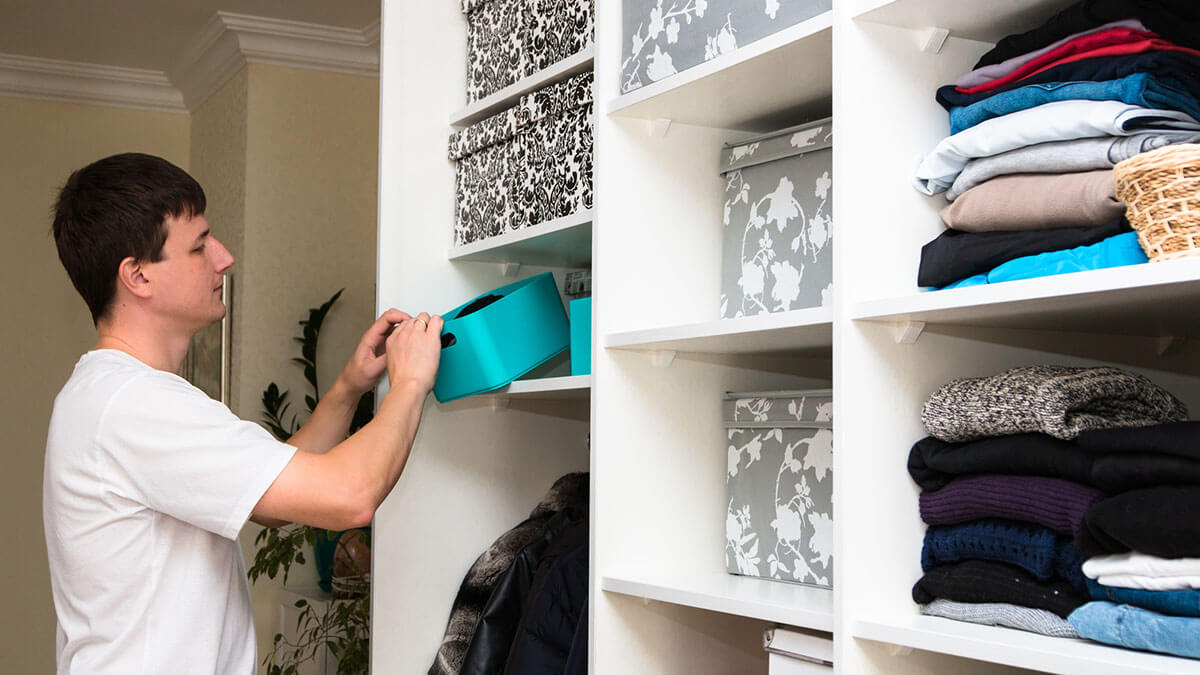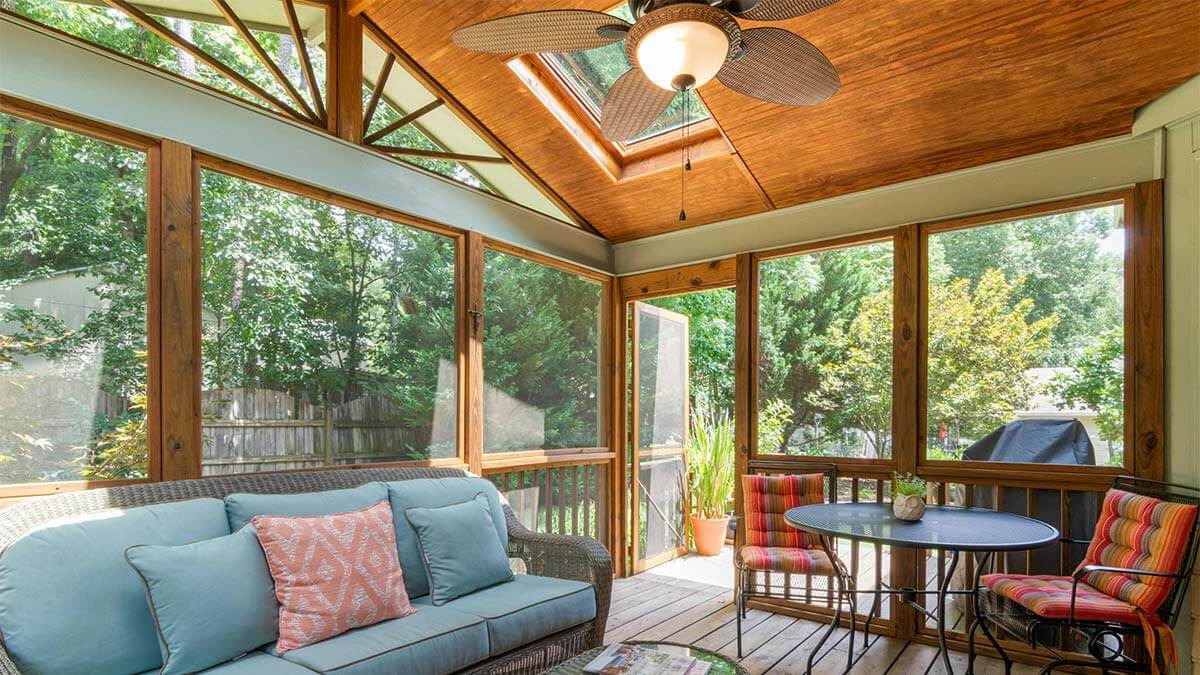Decluttering isn’t just about having a tidy space; it’s about creating a sanctuary that brings you peace and joy. A clutter-free home can reduce stress, enhance focus, and even improve your overall well-being. It’s like giving your home—and yourself—a fresh start.
But where do you begin? Tackling the mess all at once can feel overwhelming. That’s why a room-by-room checklist is a lifesaver. It breaks the process into manageable steps, so you can make consistent progress without burning out.
If you’re thinking about selling your home, decluttering can also work wonders. A clean, organized space feels bigger, brighter, and more inviting to potential buyers. Want to know how to take the next step? Visit iBuyer.com to learn how we make selling your home fast and hassle-free.
Compare Cash Offers from Top Home Buyers. Delivered by Your Local iBuyer Certified Specialist.
One Expert, Multiple Offers, No Obligation.
Decluttering Checklist
Benefits of Decluttering
Decluttering isn’t just about making your home look nice. It comes with surprising benefits that can improve your life in more ways than one. Here’s why it’s worth the effort:
1. Improved Mental Health and Reduced Stress
A cluttered space often leads to a cluttered mind. When your environment feels chaotic, it can increase anxiety and make it harder to focus. Decluttering gives you a sense of control and calm, helping you relax and feel more at ease.
2. Enhanced Home Aesthetics and Functionality
When your home is organized, every room shines with its true potential. You’ll have more space, better flow, and a house that’s ready for whatever life throws your way—whether that’s entertaining guests or enjoying a quiet evening.
3. Increased Property Value and Buyer Appeal
Thinking of selling? Decluttering makes your home look larger and more attractive, helping potential buyers see its possibilities. A clean, open space invites offers and often boosts your property’s value.
Preparation Before You Start
Before diving into decluttering, a little preparation can go a long way. By setting yourself up with the right tools and mindset, you’ll make the process smoother and more efficient.
1. Gather Your Supplies
Make sure you have everything you need before you begin. Essential items include:
- Boxes: For items to donate, sell, or store.
- Trash bags: For anything that’s broken or unusable.
- Labels and markers: To clearly mark your sorting categories.
2. Set Realistic Goals and Timelines
Decluttering takes time, so be kind to yourself. Decide how much time you can realistically dedicate to each session. Start with one room or even a small area, like a closet or drawer, to build momentum.
3. Decide on Sorting Categories
Create clear categories to keep your decisions simple. Common categories include:
- Keep: Items you use regularly or truly love.
- Donate: Things in good condition that you no longer need.
- Sell: Valuable items you can list online or at a garage sale.
- Recycle: Anything that can be repurposed responsibly.
- Discard: Broken, expired, or worn-out items with no further use.
Room-by-Room Decluttering Checklist
Tackling your home one room at a time makes decluttering manageable and ensures no area gets overlooked. Here’s your step-by-step guide to creating a clutter-free space.
Living Room
The living room often serves as the hub of activity, making it a magnet for clutter. Here’s how to reclaim this space:
Remove Outdated Magazines and Newspapers
Old reading materials pile up fast. Recycle anything you don’t need and consider going digital to reduce paper clutter.
Declutter Electronics and Organize Cables
Untangle and label cords, remove gadgets you no longer use, and store remotes in a designated spot.
Assess Decorative Items and Furniture
Keep only pieces that truly enhance the room. Consider donating or selling extras that crowd the space.
Kitchen
The kitchen is often the heart of the home—and a clutter magnet. Streamlining this space can make meal prep more efficient and enjoyable.
Dispose of Expired Food Items and Spices
Check your pantry, fridge, and freezer. Toss anything past its expiration date, including old spices that have lost their flavor.
Organize Pantry and Cabinets
Group similar items together—canned goods, snacks, baking supplies—and use clear bins or labels to keep things tidy. Eliminate duplicate utensils or gadgets you never use.
Clear Countertops of Non-Essential Items
Only leave out items you use daily, like a coffee maker or cutting board. Store less frequently used appliances to maximize workspace.
Bedrooms
Your bedroom should be a peaceful retreat, not a storage area for unused items. Decluttering here will help you relax and recharge.
Sort Through Clothing
Use the “one-year rule”—if you haven’t worn it in the past year, it’s time to donate or discard. Organize what’s left by season or type for easy access.
Organize Accessories and Shoes
Store jewelry, belts, and other accessories in compartments or hooks to keep them visible and tangle-free. Line up shoes neatly or use a rack to maximize floor space.
Clear Nightstands and Under-Bed Storage
Remove unnecessary books, gadgets, or clutter from nightstands. Check under the bed for forgotten items, and use storage bins to keep essentials like extra linens tidy.
Bathrooms
Bathrooms are small but busy spaces that can quickly become overrun with unused products and clutter. Here’s how to bring order back:
Discard Expired Medications and Beauty Products
Check expiration dates on medications, makeup, and skincare. Dispose of them properly, following local guidelines for hazardous waste if needed.
Organize Toiletries and Towels
Use baskets or containers to separate daily-use items from backups. Roll towels neatly or store them vertically to save space.
Ensure Countertops Are Free of Unnecessary Items
Keep only the essentials, like soap and a toothbrush holder, on display. Store everything else in cabinets or drawers for a clean, minimalist look.
Home Office
A clutter-free home office promotes focus and productivity. Let’s make this space as efficient as possible.
Shred Unneeded Documents and Digitize Important Files
Safeguard your records by scanning and saving them digitally. Shred outdated paperwork or documents you no longer need.
Organize Office Supplies and Declutter the Desk
Gather pens, notebooks, and other supplies into drawers or organizers. Clear your desk of non-essential items to create a clean work surface.
Manage Cables and Electronic Devices
Use cable organizers or ties to tame wires. Recycle or donate electronics you don’t use, such as old printers or chargers.
Garage/Basement/Attic
These spaces often become dumping grounds for unused items. With a little effort, they can be transformed into functional, organized areas.
Sort Through Stored Items
Go through boxes, bins, and shelves. Donate or discard anything you haven’t used in years, like old sports equipment, toys, or holiday decorations.
Organize Tools and Seasonal Items
Use labeled bins or pegboards to neatly store tools and hardware. Group seasonal items—like holiday decor or camping gear—and store them in accessible containers.
Ensure Pathways Are Clear and Items Are Accessible
Avoid stacking items in a way that blocks access. Create clear pathways so you can safely and easily navigate the space.
Maintaining a Clutter-Free Home
Once you’ve decluttered, keeping your home organized requires consistent habits. These tips will help you maintain a tidy and stress-free environment long-term.
1. Implement Daily Habits to Prevent Clutter
- Put items back in their designated places immediately after use.
- Spend 5–10 minutes each day tidying up high-traffic areas like the kitchen or living room.
2. Schedule Regular Decluttering Sessions
- Set aside time quarterly or seasonally to reassess and organize your belongings.
- Use these sessions to address new clutter before it gets overwhelming.
3. Encourage Household Participation
- Make organization a team effort by involving everyone in the home.
- Create simple systems that are easy for all family members to follow, such as labeled bins or assigned storage spots.
Reilly’s Two Cents
Having worked with countless clients to prepare their homes for sale, I’ve seen firsthand how a well-organized, decluttered space can transform both the look and feel of a home. Here are my personal tips to make decluttering easier and more effective:
1. Start with the Area That Causes the Most Stress
Begin with the space that feels the most overwhelming—perhaps it’s the overstuffed closet or the cluttered kitchen counter. Tackling this first gives you an immediate sense of accomplishment.
2. Use the “One In, One Out” Rule
For every new item you bring into your home, remove an old one. This keeps clutter from creeping back and helps you think more intentionally about new purchases.
3. Create Designated Spaces for Frequently Used Items
Items you use daily—like keys, chargers, or mail—should have a permanent home. This simple habit saves time and keeps your space organized.
Decluttering isn’t just about improving your home; it’s about creating a space that works for you and brings you peace. Start small, stay consistent, and watch your home—and mindset—transform.
Conclusion
Decluttering is more than just tidying up—it’s about creating a harmonious living space that reflects your best self. A clutter-free home enhances your peace of mind, makes daily life easier, and can even boost your property’s value if you’re considering selling.
With the help of this room-by-room checklist, you have all the tools you need to tackle clutter in a structured and stress-free way. Remember, small steps lead to big results. Whether you’re starting with one drawer or an entire room, every effort counts.
Ready to begin your decluttering journey? Start today, and enjoy the benefits of a refreshed, organized home. If you’re planning to sell, a clutter-free space can make a world of difference. Visit iBuyer.com to discover how we can help you sell your home quickly and efficiently.
Instant Valuation, Confidential Deals with a Certified iBuyer.com Specialist.
Sell Smart, Sell Fast, Get Sold. No Obligations.
FAQ
It’s a good idea to do a major decluttering session once a year, with smaller sessions every three to four months. This helps keep things manageable and prevents clutter from piling up again.
For items you no longer need, consider donating usable goods to local charities or thrift stores. You can sell valuable items on platforms like eBay, Facebook Marketplace, or through a garage sale. Recycle materials like electronics, paper, and plastics responsibly. For items that are broken or beyond repair, discard them safely.
Adopt these simple habits:
Regularly assess your belongings to ensure they still serve a purpose.
Follow the “one in, one out” rule: for every new item, remove an old one.
Commit to putting items back in their designated spots after use.
Start small—choose one drawer, shelf, or corner to focus on. Celebrate small wins and build momentum over time. If needed, enlist help from family, friends, or even professional organizers.
Reilly Dzurick is a seasoned real estate agent at Get Land Florida, bringing over six years of industry experience to the vibrant Vero Beach market. She is known for her deep understanding of local real estate trends and her dedication to helping clients find their dream properties. Reilly’s journey in real estate is complemented by her academic background in Public Relations, Advertising, and Applied Communication from the University of North Florida.




